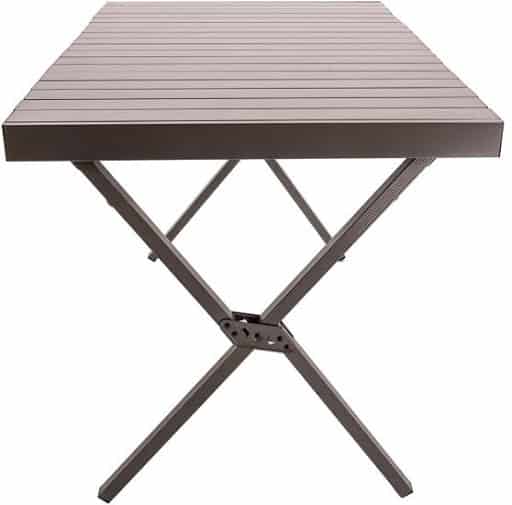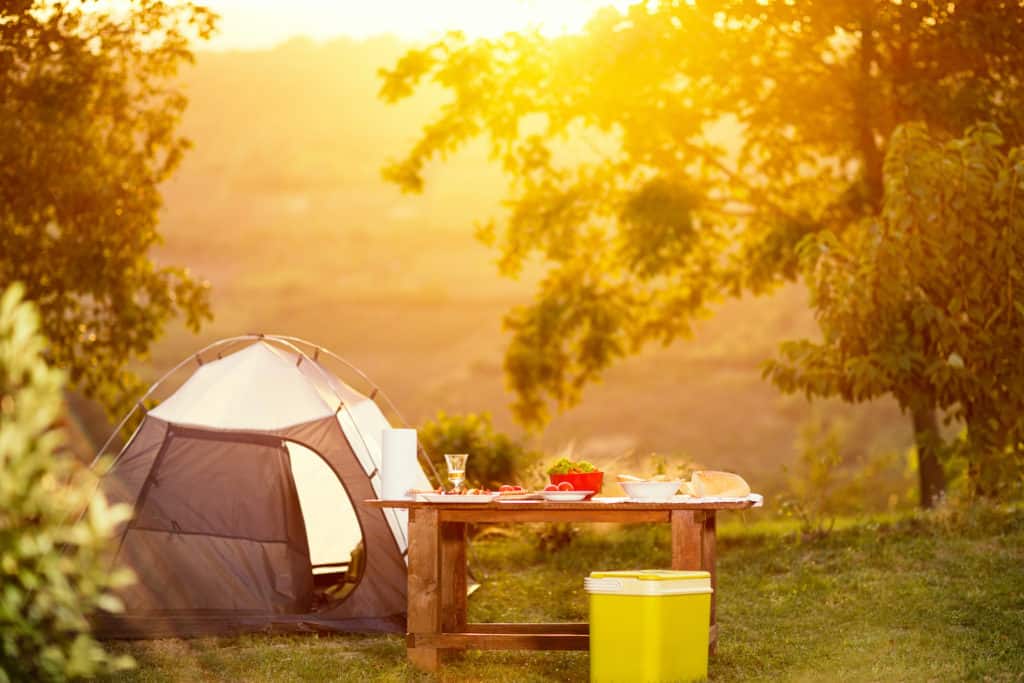
ALPS Mountaineering Dining Table
Previous Next Item Specs Honest Review Other Users Experience If you’re about to head out for a camping trip, it’s pivotal to have all of
Few things are as satisfying as setting up camp and knowing your in for some natural bliss. Of course, part of setting up camp is getting your camp kitchen in working order. Gone are the days of disposable cups and bad-for-the-environment styrofoam plates. Now it is all about setting up a kitchen that is sustainable, easy-to-use, and perfect for whatever you need to cook at camp. We’ve rounded up the essentials of every camp kitchen by product category down below.
The right camping stove can go a long way. There are five key types of camping stoves on the market today, they include:
Choosing the best camping stove means knowing your needs while camping. Backpackers tend to stick with lightweight wood-burning camping stoves or alcohol burning stoves because they’re easy to transport. Car campers and those who camp occasionally do best with canister and liquid fuel stoves.
Camping may be about roughing it, but that doesn’t mean you have to skimp on cookware and dinnerware. Cookware includes anything used to cook your meal while camping. Generally, campers enjoy to either have a set of pots (best for large groups), or collapsible pots (best for backpackers). Some even like to have a cast-iron pan or two for over a fire. In terms of dinnerware, most campers enjoy having a set of reusable plates/bowls, kitchen knives, scissors, a cutting board, cutlery, coffee cups, and glasses. For those who need a coffee buzz, a camping percolator is also recommended.
If you’re car camping, you can easily bring fresh foods in a cooler to cook up at the site. However, if you’re backpacking or mountaineering, you’ll need to keep a camp kitchen stocked with freeze-dried favorites. With these foods, all you have to do is boil water, pour into the provided pouch or bowl, and enjoy a hot meal. Freeze-dried camping food has come a long way. Now you can get everything from Pad Thai to fettucini alfredo. While stocking your camp kitchen, strive to keep plenty of dehydrated fruits, protein bars, and granola bars on hand just in case.
If you’re transporting fresh food or beverages a cooler at your camp kitchen is a must. Generally, coolers are broken down into a few categories:
Additionally, you’ll find that coolers are available in a range of 0-150 liter capacity. Soft-sized coolers are great if you’re transporting a minimal amount of food or beverages. Hardsided coolers are better if you’re camping with a large group or have plenty of food to share.
Wheeled coolers are great for car camping because they can easily be transported to and from the vehicle without having to lift the cooler. Backpack coolers are ideal for those who are backpacking or day-hiking to a campsite. We’ve reviewed each of the most popular coolers to find your best options.
Once you have the basics, you may also want to pick up some camping/picnic essentials. These include vinyl tablecloths, beeswax food wraps, food covers, and tablecloth clamps.
Think of setting up your camp kitchen as you would your own kitchen at home. You need supplies to cook, preserve, and enjoy. We’ve reviewed everything you need to set up your perfect camp kitchen with every product necessary in mind.

Previous Next Item Specs Honest Review Other Users Experience If you’re about to head out for a camping trip, it’s pivotal to have all of

Preparing yourself and finding all of the right tools for your camping trip can often be stressful. You’ll want only the best equipment to

reviwedAF is an independent website created by outdoor enthusiasts. The views expressed on this site may come from individual contributors and do not necessarily reflect the view of reviewedAF or any other organization.